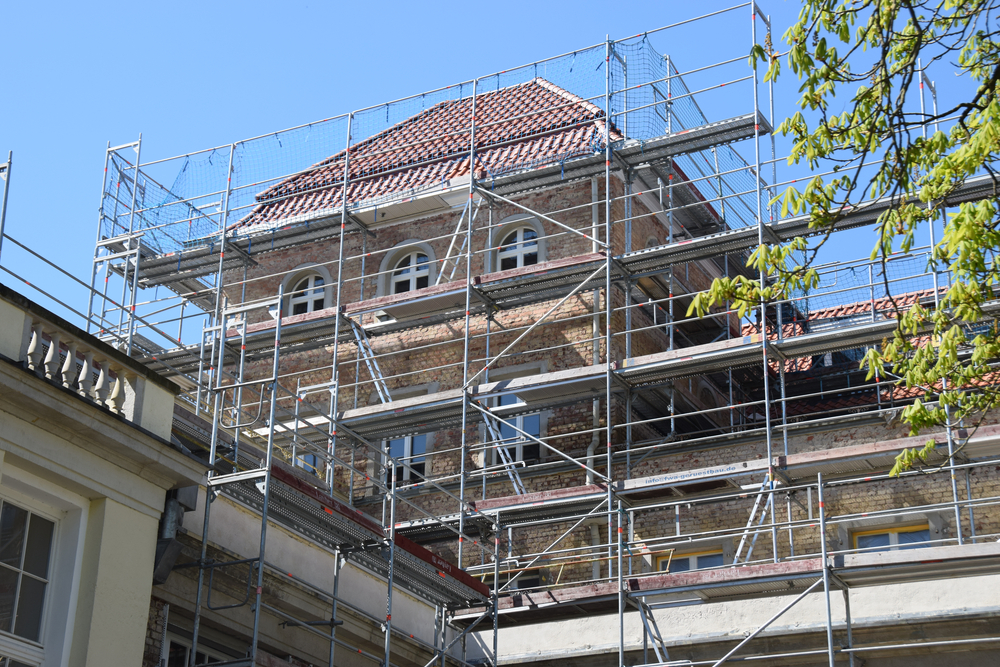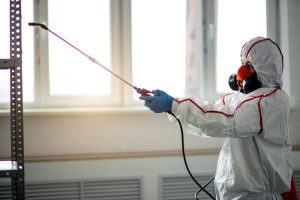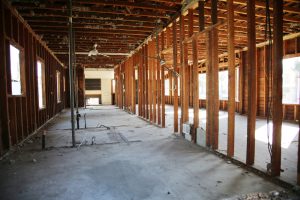Historic buildings challenge a developer’s creativity and resourcefulness. However, they are also a vital part of the community that future generations can enjoy through historic preservation.
Lead paint abatement is one vital aspect of rehabbing an old site if there is lead paint on the premises. Environmental Demolition Group (EDG) can utilize several methods to abate lead on your commercial site, which we explain in this guide.
Lead Abatement Methods
Lead abatement achieves two things. First, some methods can remove lead from a site to prevent the public from being exposed to it. Other methods cover or seal lead permanently so that the public is no longer released into the environment.
Our firm uses five main lead abatement methods to keep the public free from lead exposure at your site.
1. Encapsulation
Encapsulation provides an effective method for managing lead paint by sealing it with a protective coating or material. The goal is to prevent harmful lead dust from being released into the environment while preserving the original surface.
This approach to lead abatement obviates full removal and is less invasive, making it more cost-effective.
Surfaces must be in good condition for encapsulation to work during lead abatement. It is not a permanent solution and requires ongoing maintenance or eventual replacement for public safety.
For example, if encapsulation keeps lead away from the public, but then the structure that is encapsulated becomes damaged, a commercial lead abatement team must test and evaluate the site.
Specialized materials, such as specialized paints, sealants, or specially made drywall, are used for encapsulation. These materials must meet EPA standards to ensure both effectiveness and safety during lead abatement.
Encapsulation, though effective, has its limitations. It may not provide long-term protection for areas subject to frequent friction or movement.
It is less effective on heavily damaged or high-wear surfaces, in which case lead can be removed from the site entirely.
2. Enclosure
Enclosure offers a lead abatement method that creates a durable physical barrier to isolate lead-containing materials from the surrounding environment.
Our team can construct this barrier using non-lead materials or by sealing the lead-containing material within a secure structure. Concrete offers one such material, or we might encase the lead in a separate room that no one has access to.
Enclosure works well when removing lead-containing materials becomes impractical or prohibitively expensive.
We might use this method for historic buildings that need structural members to stay intact or with large-scale structures like bridges, where preservation or logistics make removal challenging.
Like encapsulation, ongoing maintenance is crucial to ensure the barrier remains intact and continues to prevent lead exposure. Enclosure may not be appropriate if a more immediate solution is needed.
3. Replacement
Lead abatement may require the complete replacement of materials that contain this hazardous material. Our team might replace lead pipes and plumbing fittings, as well as lead-painted windows and doors, to bring them up to code.
Lead pipes represent one of the most common items with lead in them. Replacing these pipes with modern plumbing is the most reliable way to eliminate the risk of lead contamination in drinking water.
Upgrading windows and doors removes the lead entirely and improves your building’s energy efficiency.
Replacement is not always necessary or the most practical solution. Removal or encapsulation may be more suitable for smaller areas.
We’ll define the best approach based on the condition of the material, the level of lead exposure risk, and the overall project goals.
4. Paint Removal
Paint removal is a widely used lead abatement technique. It occurs when our team strips lead-containing paint from affected surfaces. We can use scraping, chemical stripping, or heat guns, depending on the specific situation and surface material.
Following paint removal, the surface is thoroughly cleaned to eliminate any remaining lead residue. We’ll then apply pain or a special sealant to cover these surfaces. We will dispose of the paint properly through sealed containers.
Paint removal requires the right personal protective equipment (PPE) to minimize exposure risks to our team while we abate the lead on your property.
5. Soil Remediation
Soil remediation occurs when we deal with lead-contaminated soil. Our detection methods may find contaminated soil in outdoor areas affected by lead-based paint, buried pipes, or other lead sources.
The most common soil remediation technique is excavation, where we remove the contaminated soil and replace it with fresh soil. This method is highly reliable but expensive.
Soil washing is also effective. It uses water and chemicals to separate lead particles from the soil.
Our team will put lead particles in sealed containers for proper removal. The chemicals used will depend on the type of soil, concentration of lead, and how much remediation is required.
We might use inorganic acids like hydrochloric acid and sulfuric acid to dissolve lead compounds in the soil. Chelating agents, like ethylenediaminetetraacetic acid (EDTA), can form stable compounds with lead ions, effectively removing them from the soil.
Surfactants cleanse organic matter and reduce the surface tension of the washing solution, improving the contact between the chemicals and the soil particles, making it easier to wash lead away.
Soil stabilization involves adding materials to the soil to reduce lead’s mobility, effectively preventing it from spreading further. There are two ways we accomplish this.
First, we can add phosphates, silicates, and sulfides to the soil to form compounds that chemically seal lead away from the soil.
Second, we can add cement, lime, or fly ash to the soil to bind soil particles together and prevent them from reacting with the surrounding environment.
Each method has its advantages. The technique we use will depend on the extent of contamination, the project budget, and the intended use of the remediated area.
Contact Our Cincinnati Lead Abatement Company
Our team specializes in select demolition waste disposal, including lead abatement, in the Midwest and Mid-Atlantic region.
Contact us or call 859-363-4863 to learn more about what we can do for your commercial building renovation or site remediation project. We’re happy to help in any way we can.




